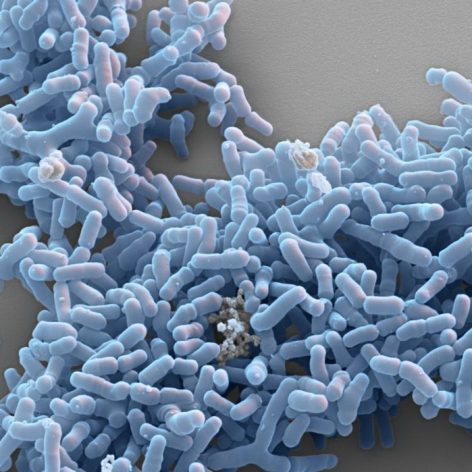Receiving the right nutrition during early life has a positive impact on many aspects of our health including, in the short-term, supporting the healthy growth and development of an individual. In the longer term, the right nutrition can positively impact the gut microbiota, immune health, and thus the risk of developing allergic disease.1Lozupone, C.A, et al. Nature. Published on 2012. 489(7415): p. 220-230 , 2Anagnostou, K, et al. Archives of Disease in Childhood. Published on 2014. 0: p. 1-5

When breastfeeding is insufficient or not possible, there is a range of options for infants at risk of an allergic disease or infants and children diagnosed with food allergies.
A new approach to allergy management
For many years, the main focus of allergy management has been allergen avoidance; this remains an effective way to manage allergies. For example, infants with cow’s milk allergy are given a hydrolysed formula that is free of intact milk proteins until symptoms resolve and an infant or child’s immune system can tolerate milk protein.
There is now increasing evidence to support a different nutritional approach to allergy management
This active nutritional approach can have a broader impact than simple symptom resolution, benefitting health in later life through acquisition of oral tolerance.3Anagnostou, K, et al. Archives of Disease in Childhood. Published on 2014. 0: p. 1-5

Healthy, non-allergic infants acquire oral tolerance, a state in which the immune system recognises food allergens as harmless and does not respond to the food allergen; this is an active physiological process during the development of the immune system.
 In line with the emerging scientific evidence, Danone Research & Innovation supports the hypothesis that controlled exposure to allergens is better than complete avoidance for a majority of infants, except for those with severe allergies for whom any exposure poses a safety risk.4Anagnostou, K, et al. Archives of Disease in Childhood. Published on 2014. 0: p. 1-5
In line with the emerging scientific evidence, Danone Research & Innovation supports the hypothesis that controlled exposure to allergens is better than complete avoidance for a majority of infants, except for those with severe allergies for whom any exposure poses a safety risk.4Anagnostou, K, et al. Archives of Disease in Childhood. Published on 2014. 0: p. 1-5
Guidelines for managing allergic disease
The international guidelines for the management of allergic diseases include recommendations for both prevention and treatment of allergies.
European Academy of Allergy and Clinical Immunology guidelines recommend the use of a hypoallergenic hydrolysed formula for high-risk infants.5 http://www.eaaci.org/foodallergyandanaphylaxisguidelines/Food%20Allergy%20-%20web%20version.pdf,6Muraro A, et al. Allergy. Published on 2014. 69: 1008-25
• Partially hydrolysed protein formulas (pHP) may be considered as a strategy for prevention of food allergies in at risk infants not exclusively breastfed.
• Hypoallergenic formulas: extensively hydrolysed protein formula (eHP) and amino acid formula (AAP) should be the formulas of choice for the management of cow’s milk allergies. The choice between eHP and AAP depends on the type of allergy and the severity of symptoms.
There is a sound scientific rationale for the use of pre-, pro and synbiotics in infants at risk of allergy
Recognising gut microbiota dysbiosis exists in infants at risk of and with allergy, and the key role of the gut microbiota on immune system maturation, there is a rationale to supplement the diet of these infants with pre-, pro- and synbiotics.7Ziegler E, et al. Term Infants Fed Formula Supplemented With Selected Blends of Prebiotics Grow Normally and Have Soft Stools Similar to Those Reported for Breast-fed Infants. Journal of Pediatric … Continue reading,8Bakker-Zierikee A, et al. Effects of infant formula containing a mixture of galacto- and fructooligosaccharides or viable Bifidobacterium animalis on the intestinal microflora during the first 4 … Continue reading,9Knol J, et al. Colon microflora in infants fed formula with galacto- and fructo-oligosaccharides: More life breast-fed infants. Journal of Paediatric Gastroenterology & Nutrician; del. Published … Continue reading,10Agostoni C, et al. Complementary Feeding: A Commentary by the ESPGHAN Committee on Nutrition. Journal of Pediatric Gastroenterology and Nutrition 46:99–110. In fact, The World Allergy Organisation guidelines recommend prebiotic supplementation to non-exclusively breastfed infants both at high and low risk for developing allergy.11Cuello-Garcia, et al. World Allergy Organization Journal 9:10. Published on 2016

Immune fitness: the importance of exposure for resilience
Immune Fitness is a field that is gaining interest in the world of immunology and allergy. The concept of ‘Immune fitness’ refers to a resilient immune system with an inbuilt capacity to adapt to challenges by establishing, maintaining and regulating appropriate immune responses.12van den Elsen, L.W, et al. Clin Transl Immunol. Published on 2017;6(1):e125 ,13Te Velde, A. A, et al. Front Immunol. Published on 2016. 7: p. 587 Learn more about immune fitness concept here.
View References
| 1 | Lozupone, C.A, et al. Nature. Published on 2012. 489(7415): p. 220-230 |
|---|---|
| 2, 3, 4 | Anagnostou, K, et al. Archives of Disease in Childhood. Published on 2014. 0: p. 1-5 |
| 5 | http://www.eaaci.org/foodallergyandanaphylaxisguidelines/Food%20Allergy%20-%20web%20version.pdf |
| 6 | Muraro A, et al. Allergy. Published on 2014. 69: 1008-25 |
| 7 | Ziegler E, et al. Term Infants Fed Formula Supplemented With Selected Blends of Prebiotics Grow Normally and Have Soft Stools Similar to Those Reported for Breast-fed Infants. Journal of Pediatric Gastroenterology and Nutrition 44:359–364. |
| 8 | Bakker-Zierikee A, et al. Effects of infant formula containing a mixture of galacto- and fructooligosaccharides or viable Bifidobacterium animalis on the intestinal microflora during the first 4 months of life. British Journal of Nutrition. Published on (2005), 94, 783–790 |
| 9 | Knol J, et al. Colon microflora in infants fed formula with galacto- and fructo-oligosaccharides: More life breast-fed infants. Journal of Paediatric Gastroenterology & Nutrician; del. Published on Jan 2005;40;1:36-42 |
| 10 | Agostoni C, et al. Complementary Feeding: A Commentary by the ESPGHAN Committee on Nutrition. Journal of Pediatric Gastroenterology and Nutrition 46:99–110. |
| 11 | Cuello-Garcia, et al. World Allergy Organization Journal 9:10. Published on 2016 |
| 12 | van den Elsen, L.W, et al. Clin Transl Immunol. Published on 2017;6(1):e125 |
| 13 | Te Velde, A. A, et al. Front Immunol. Published on 2016. 7: p. 587 |



